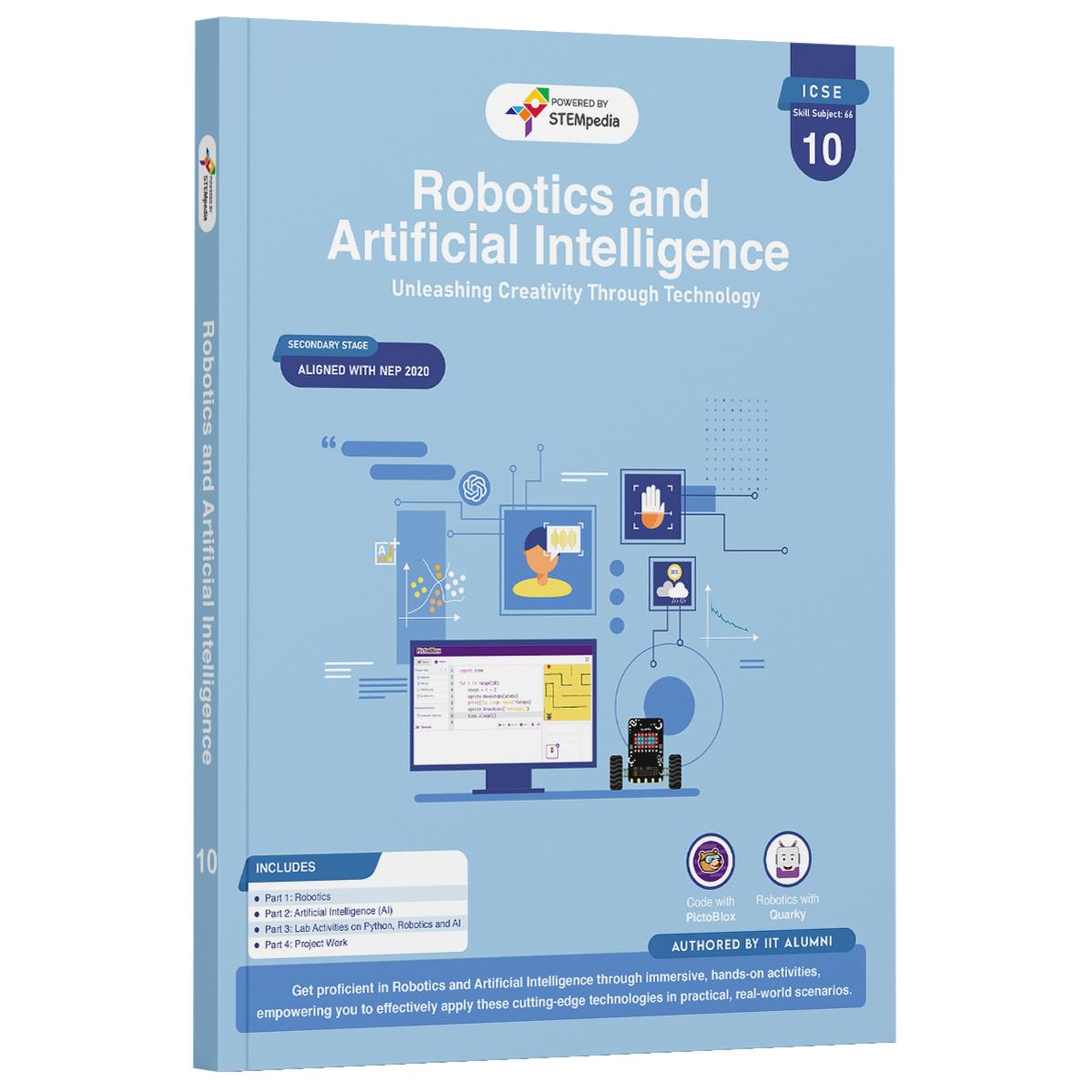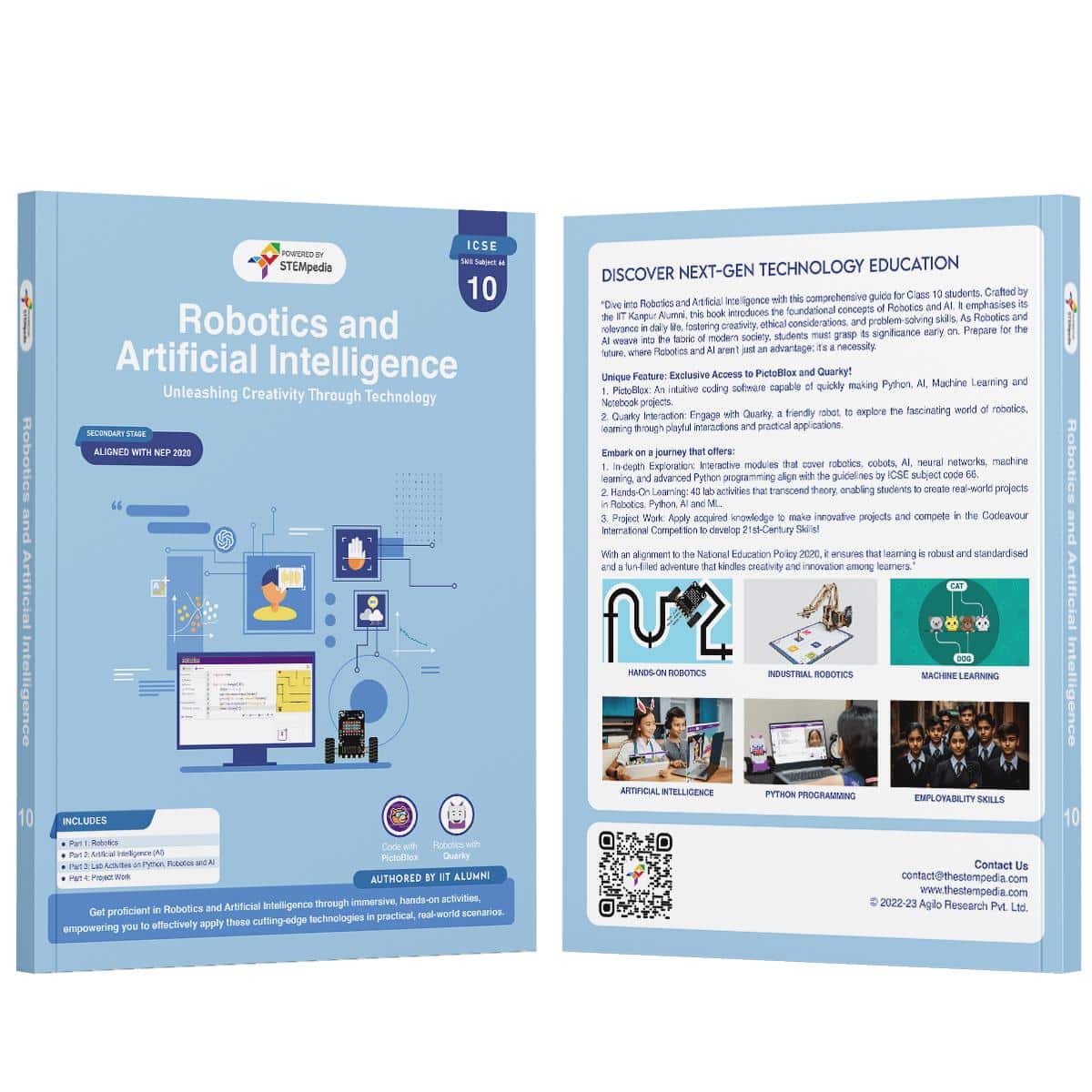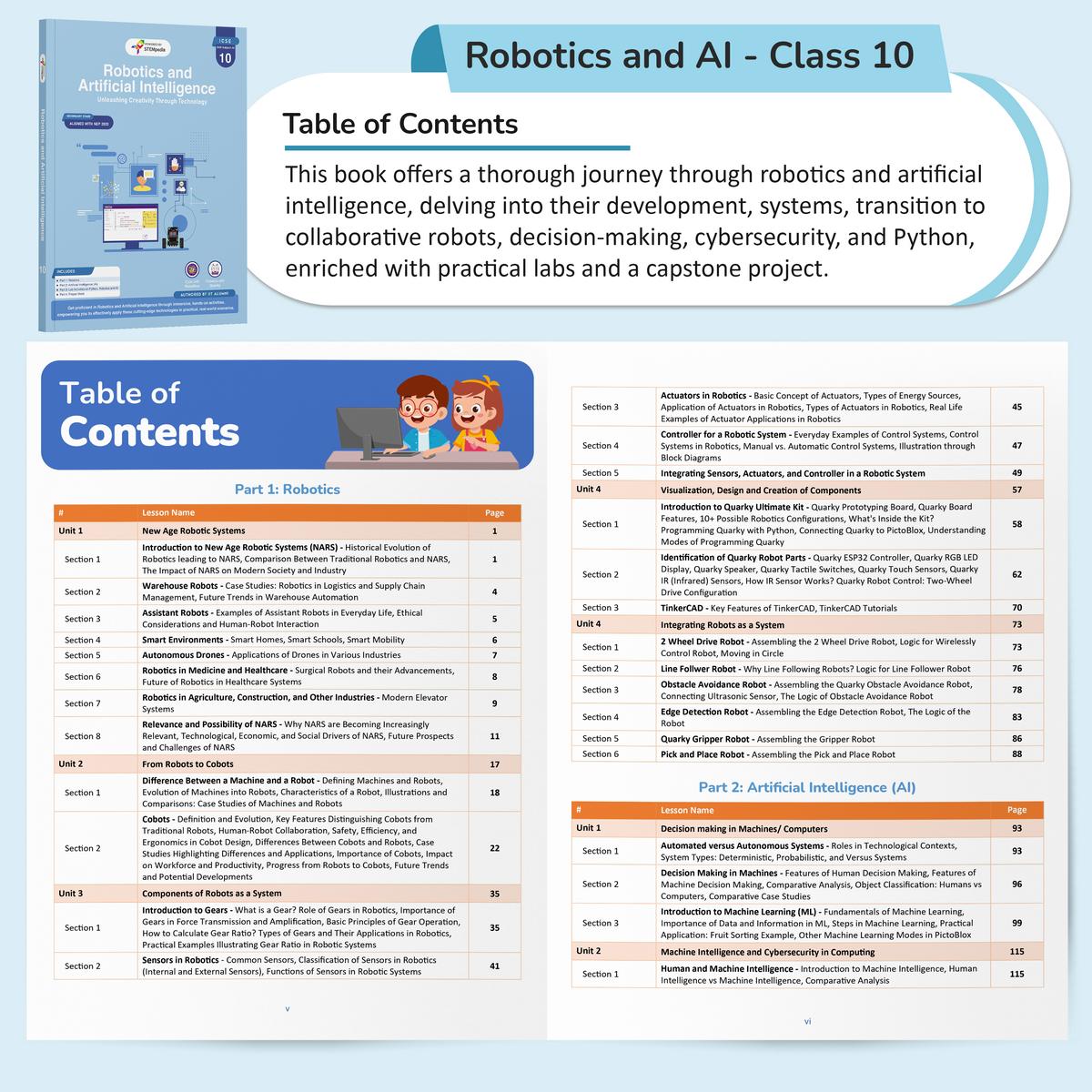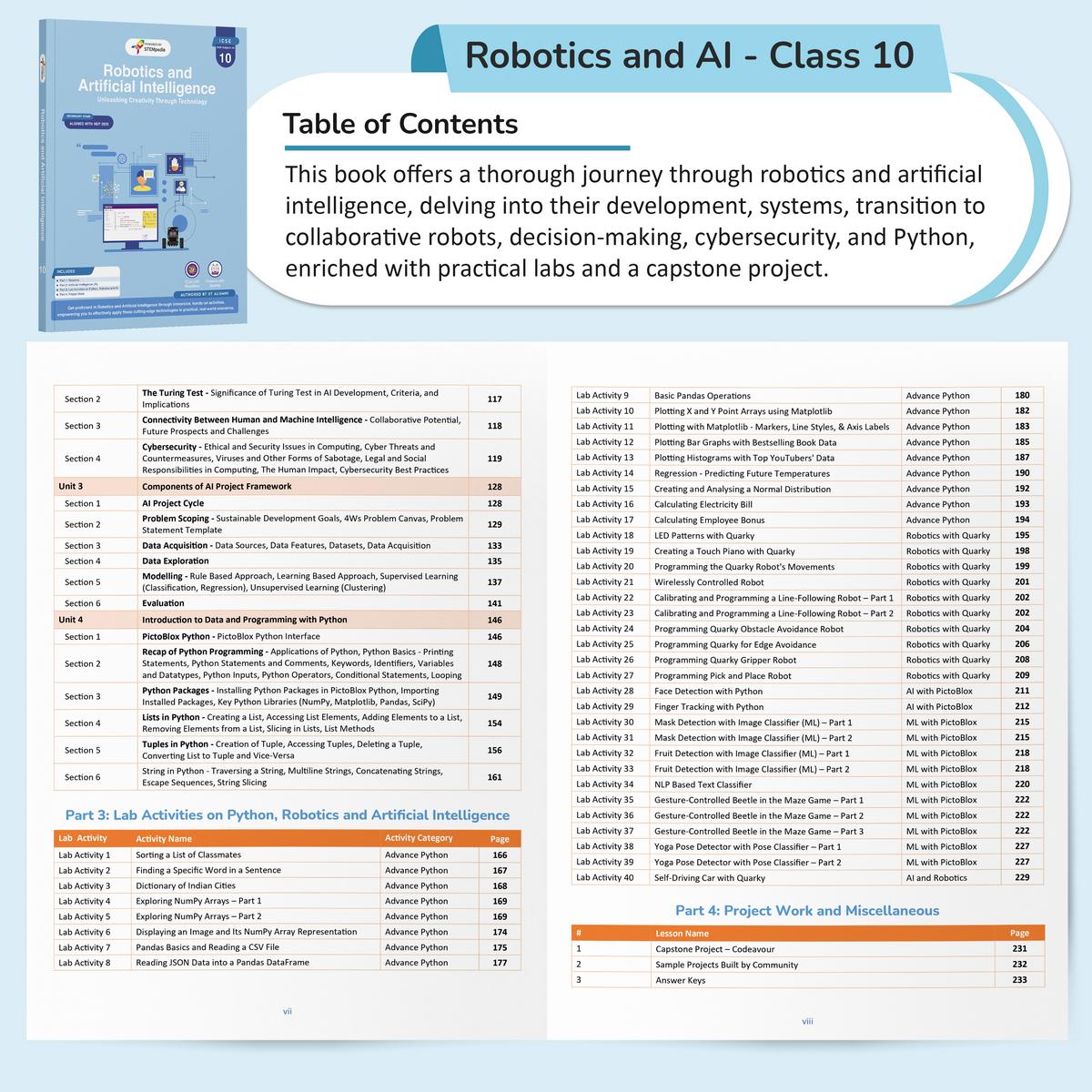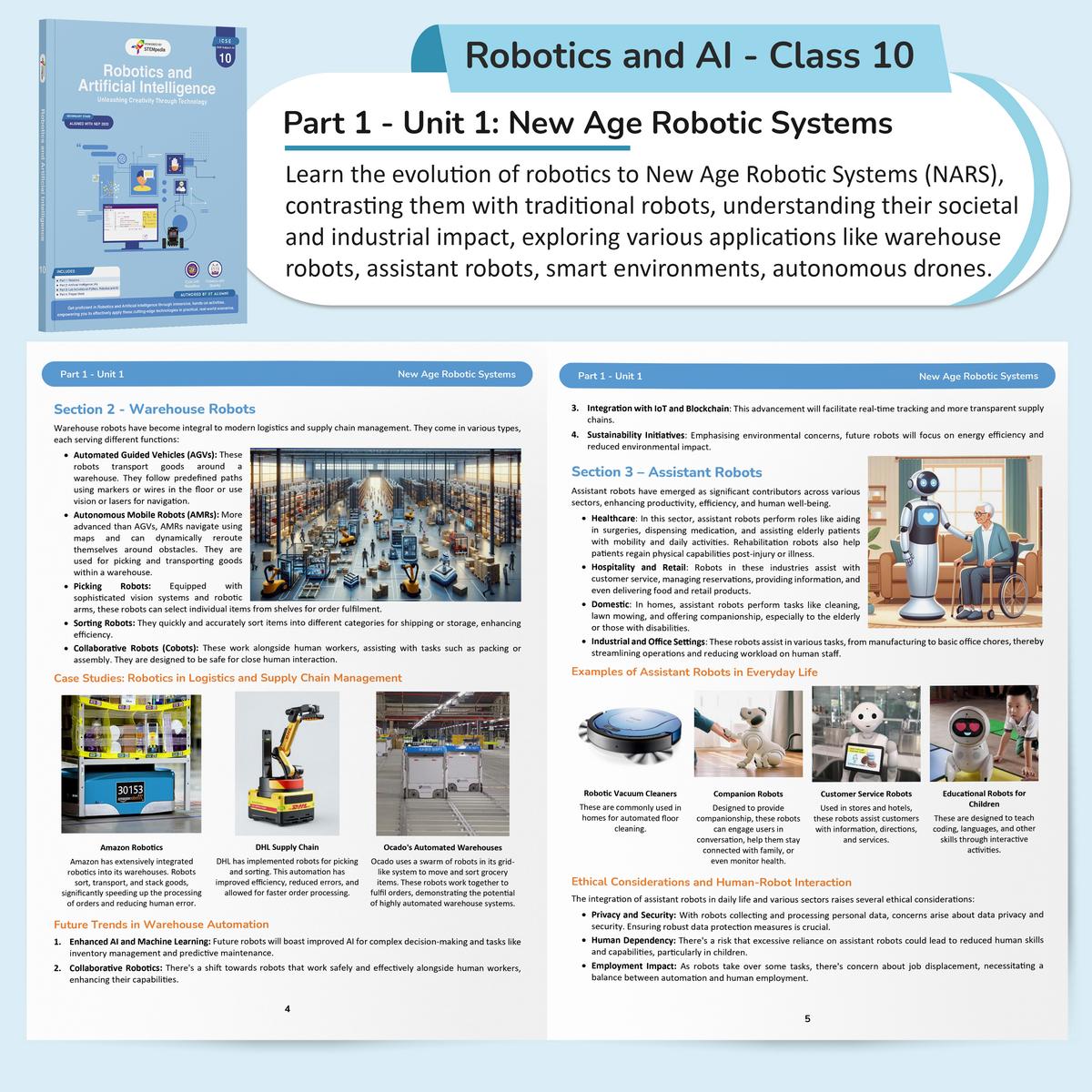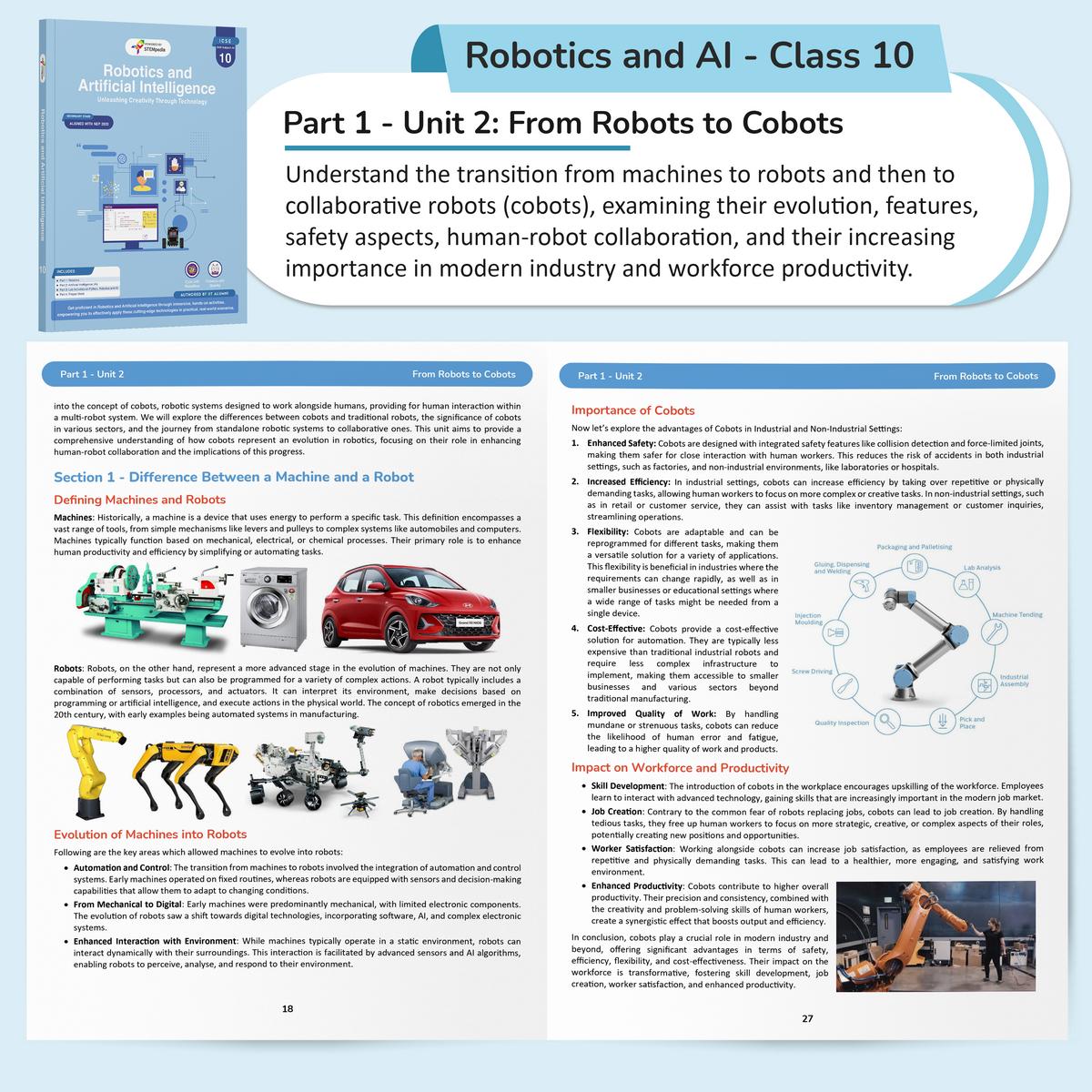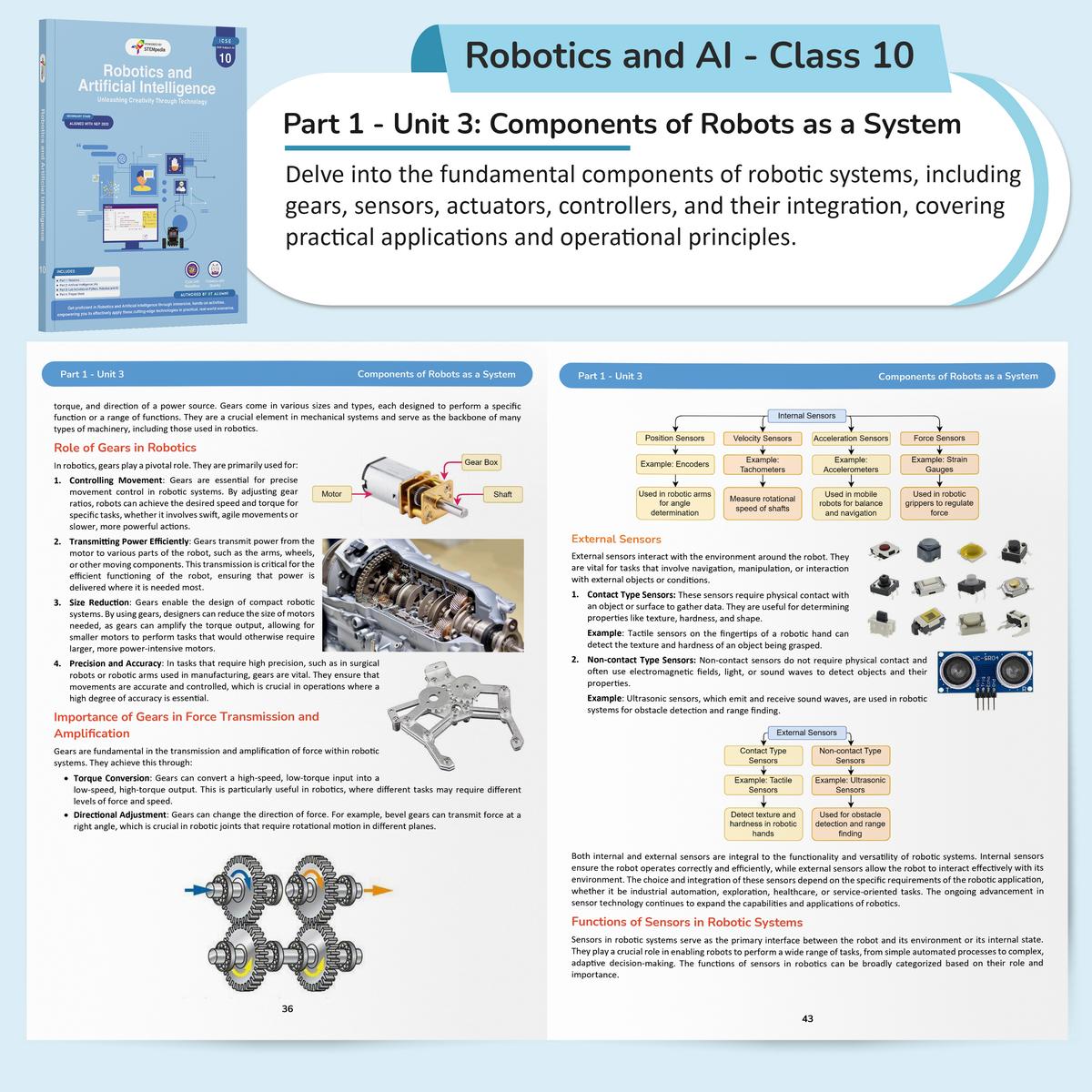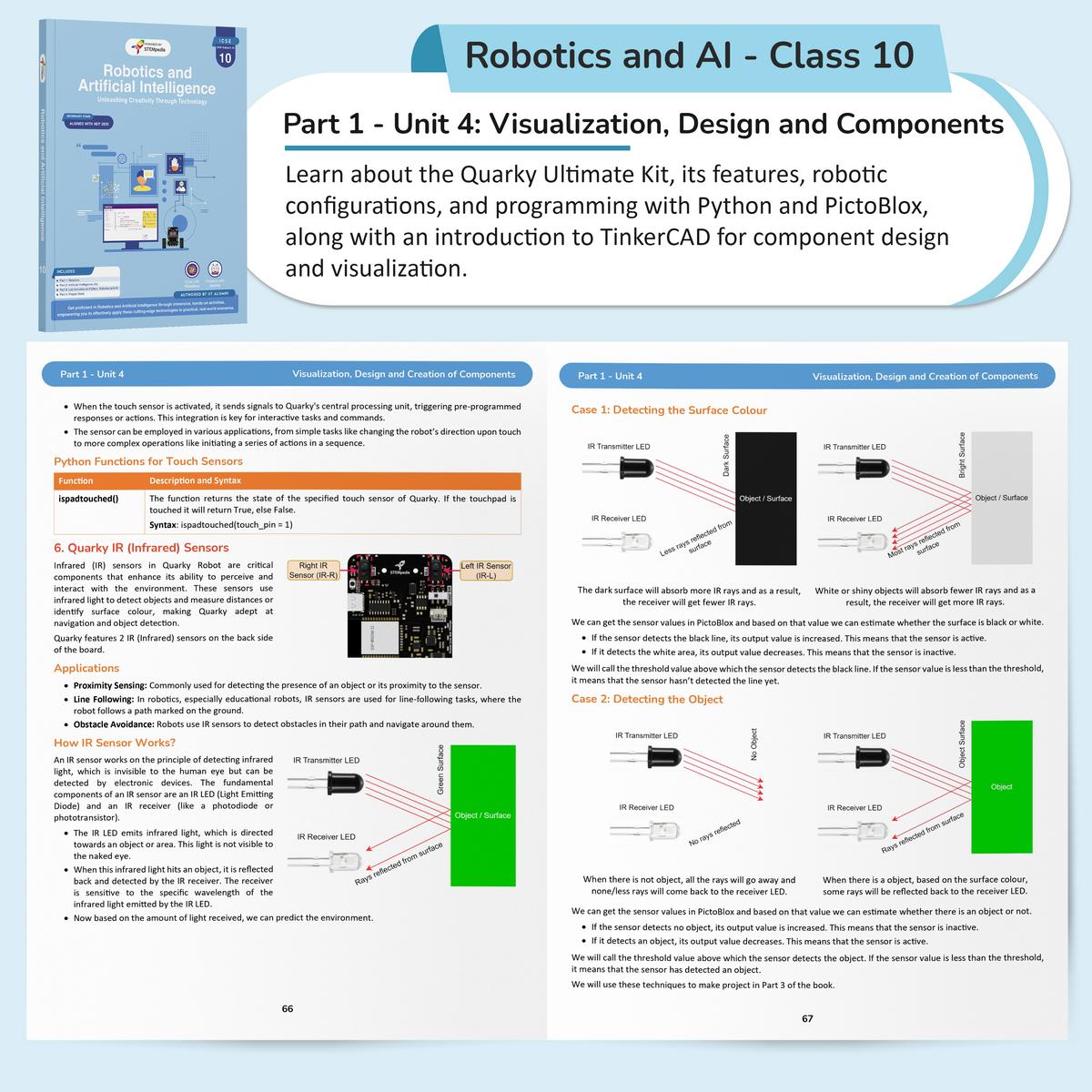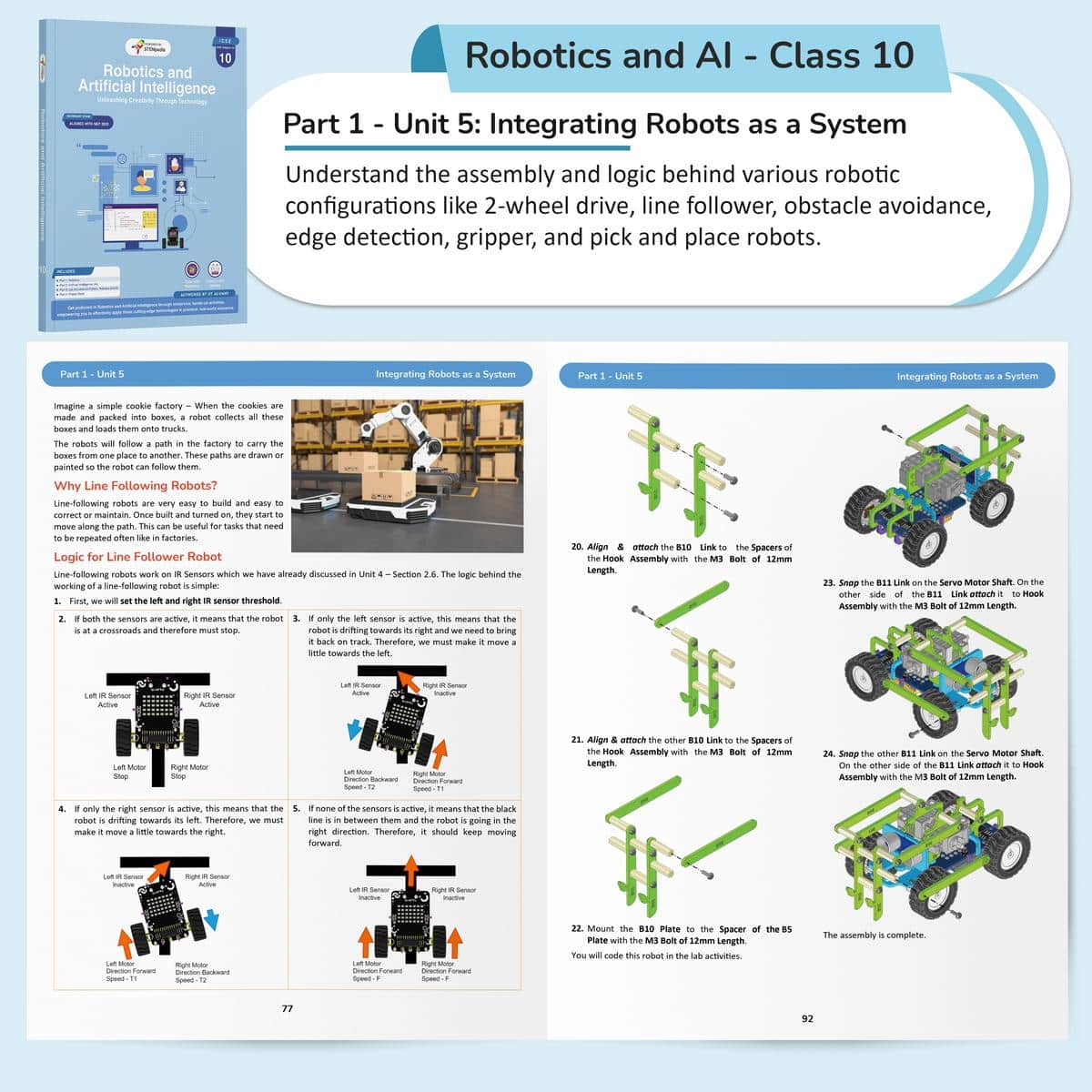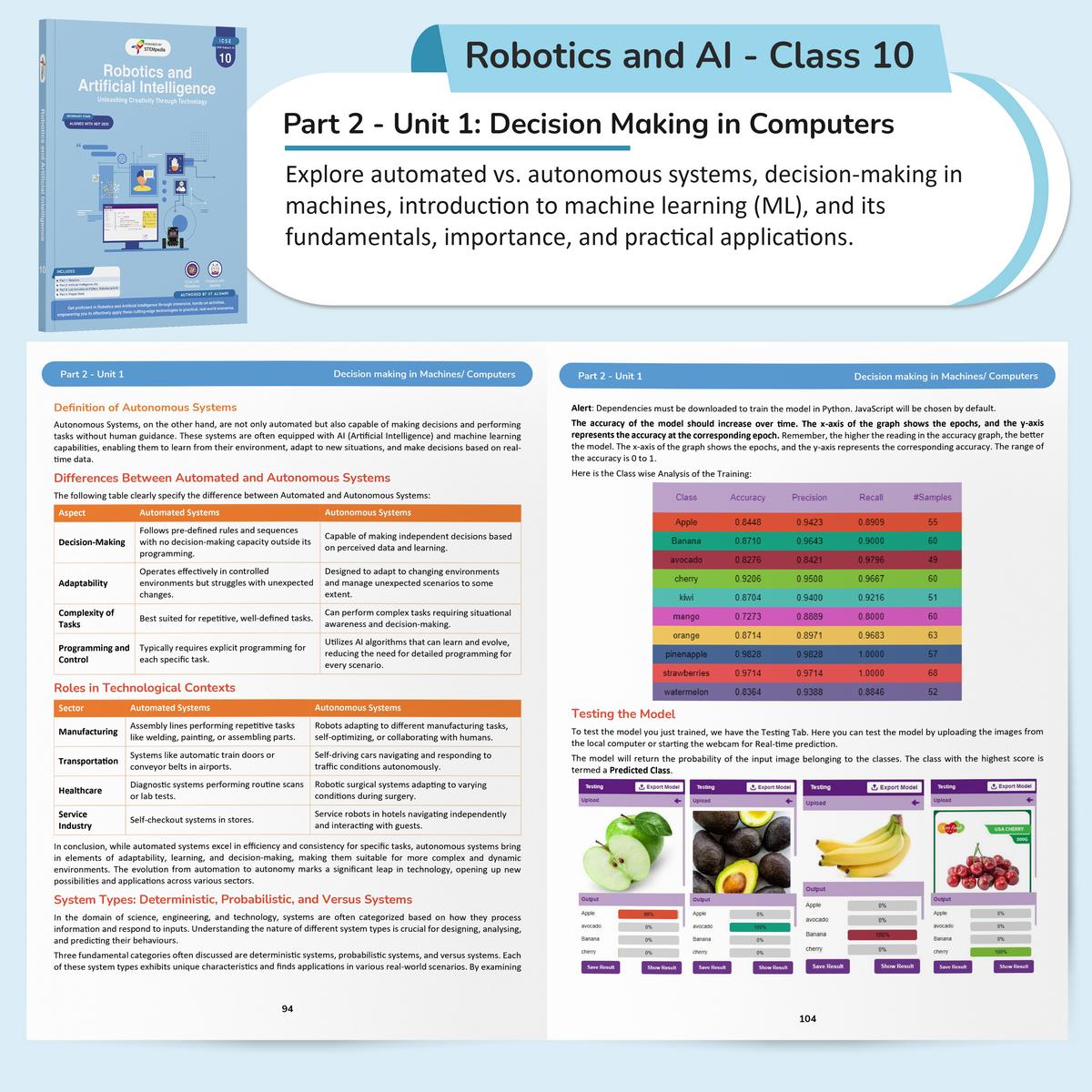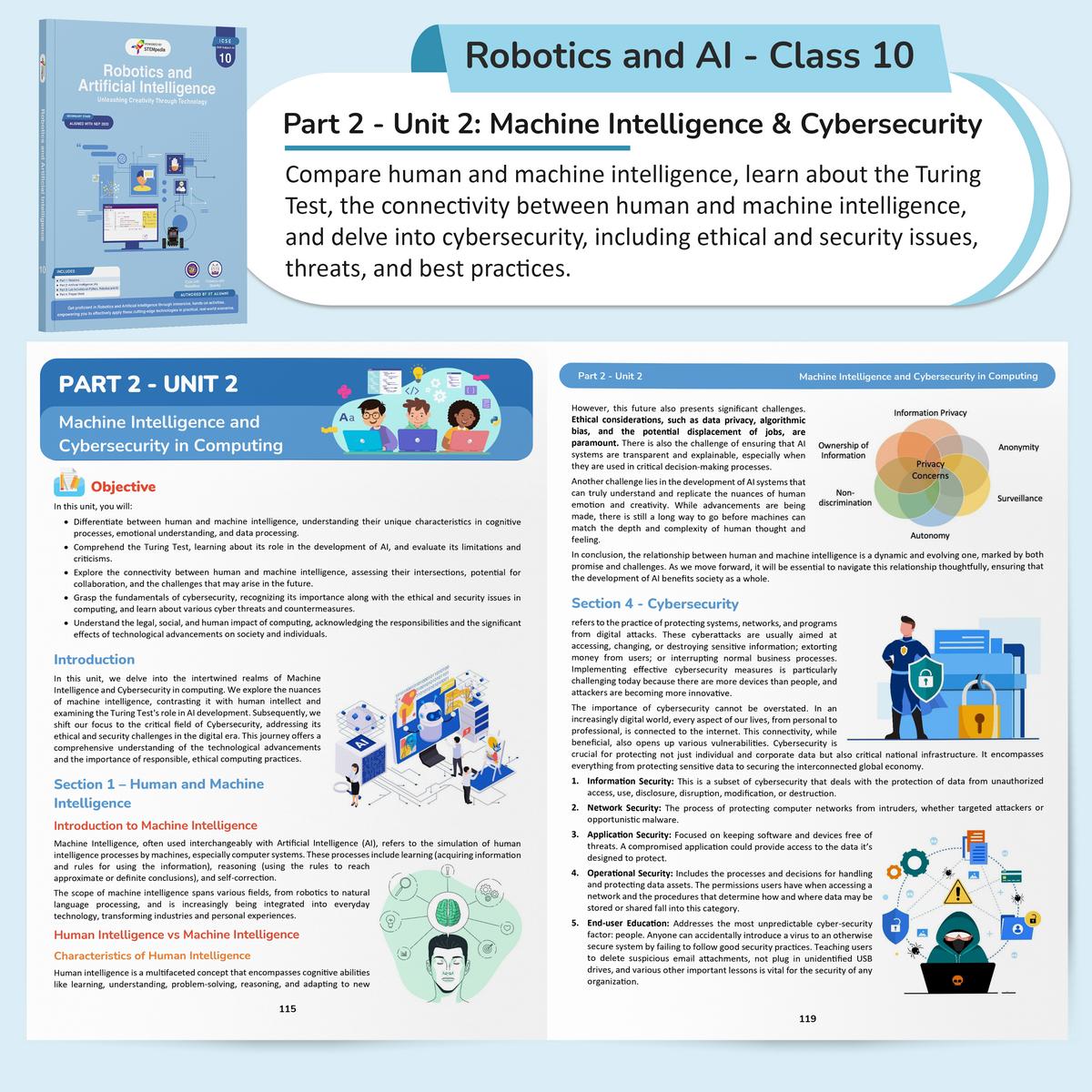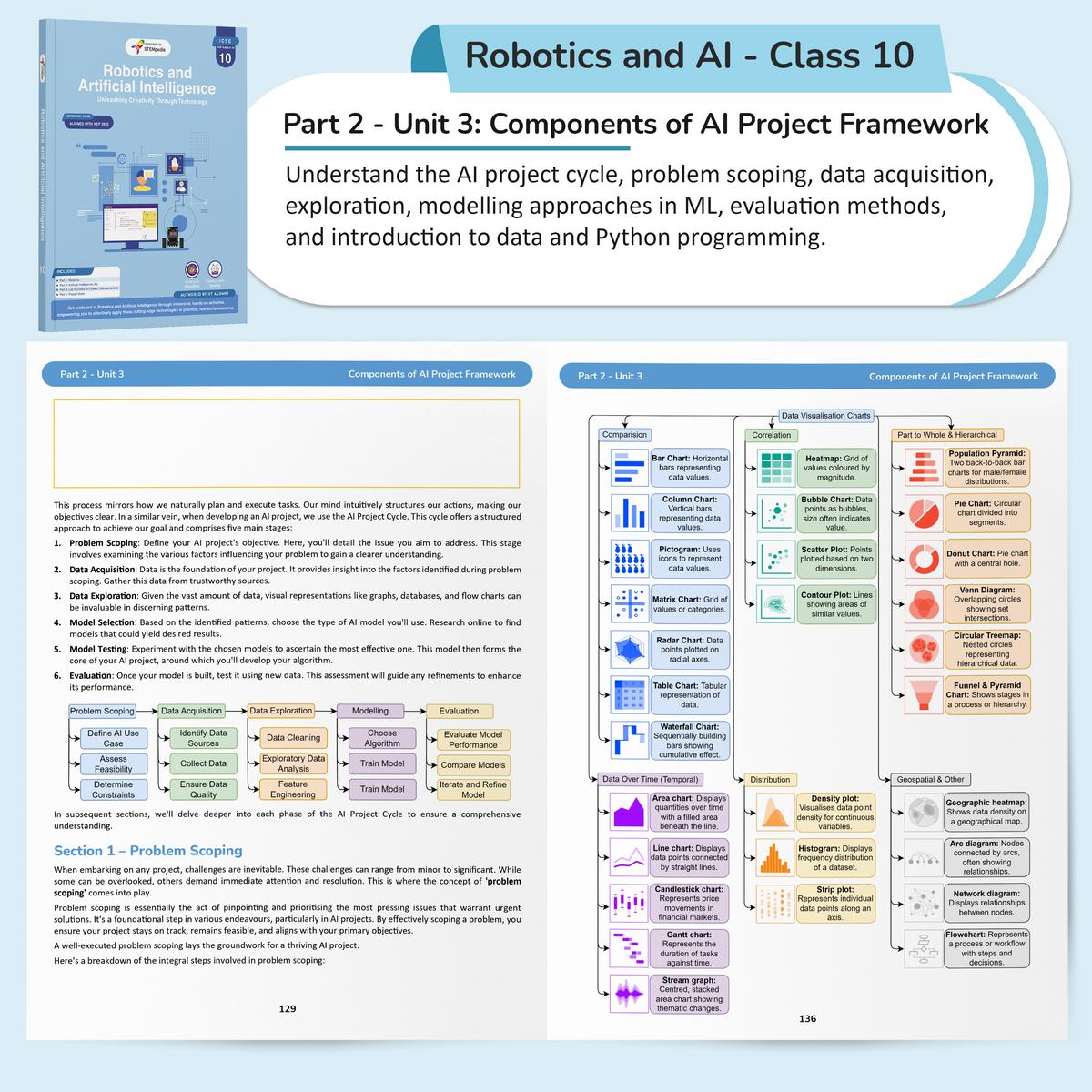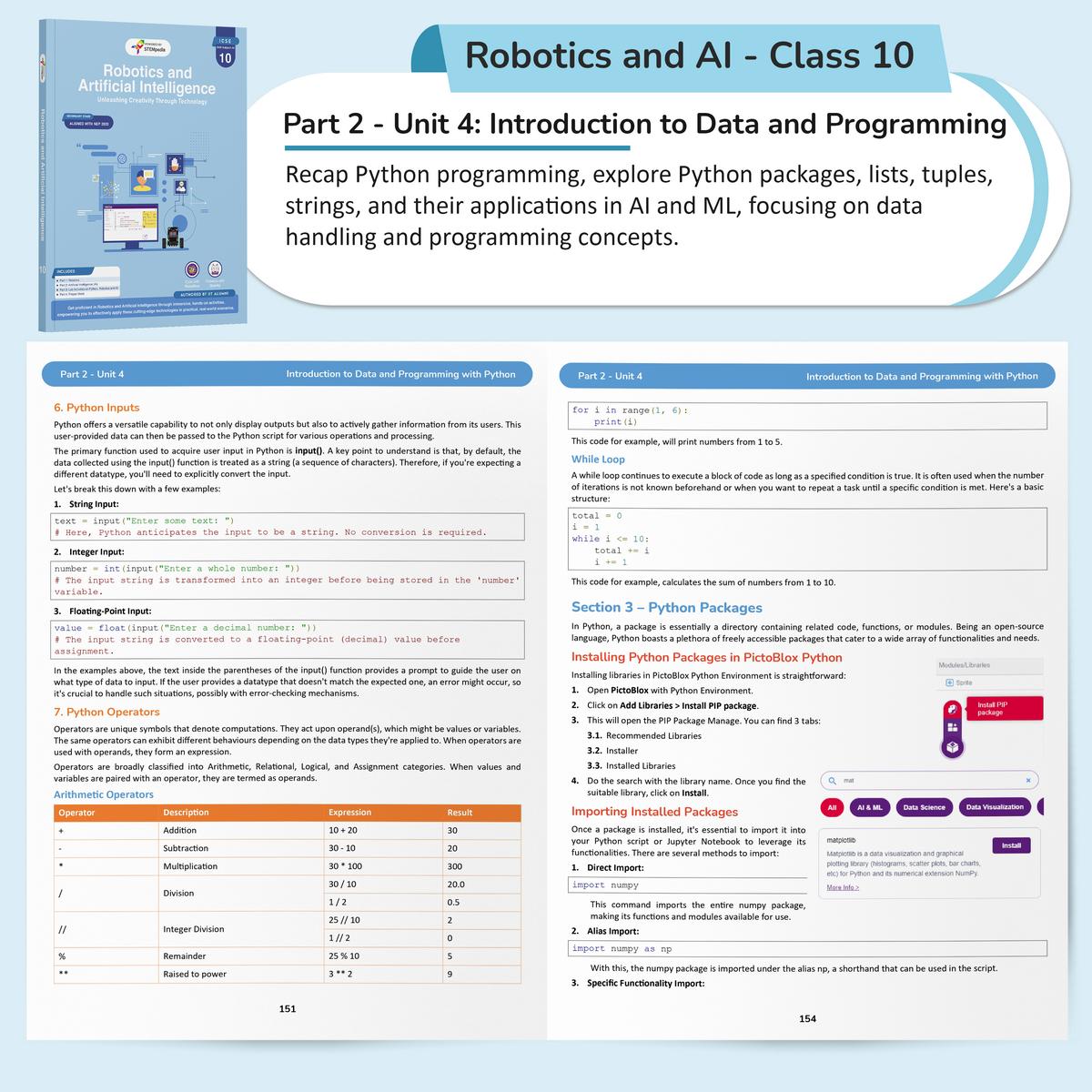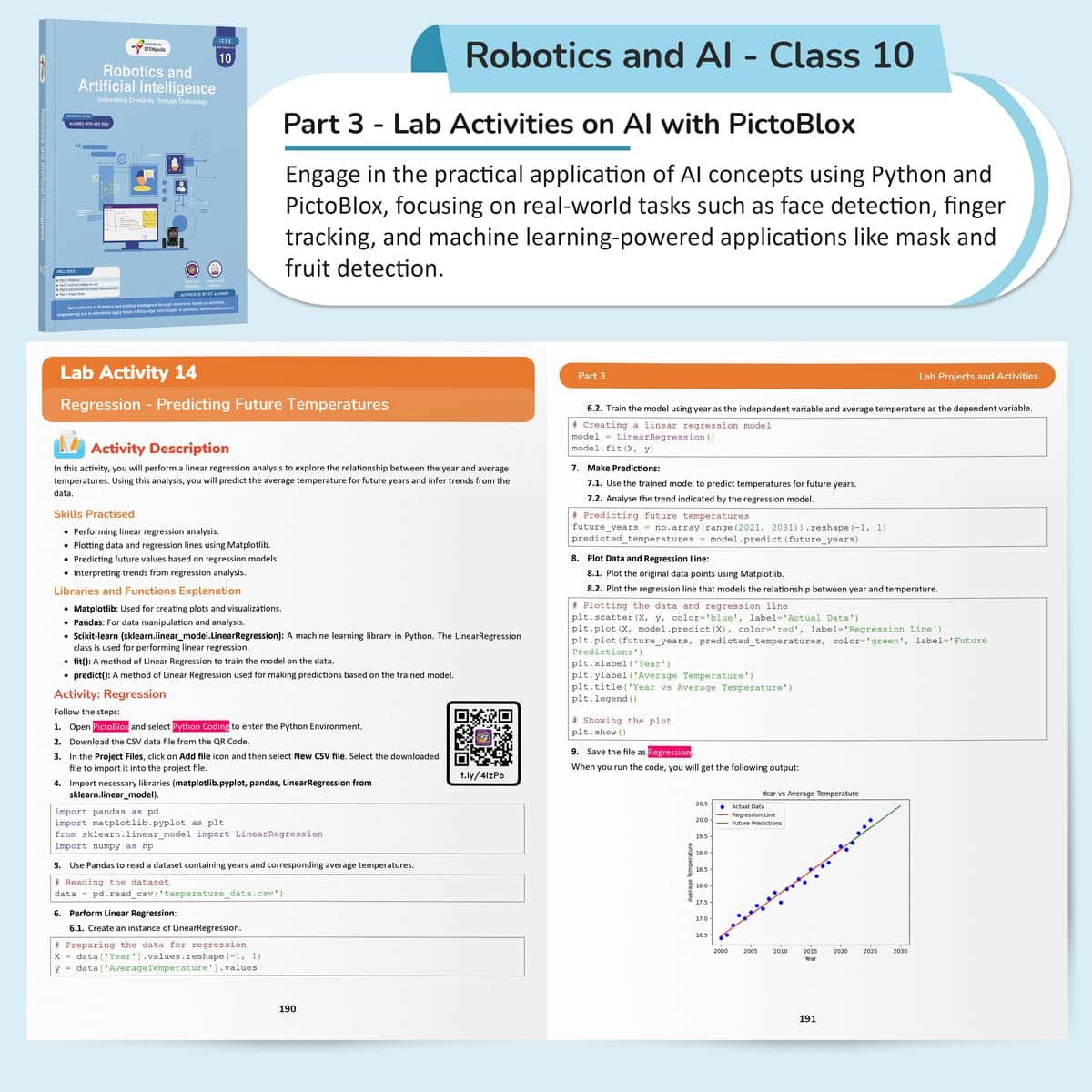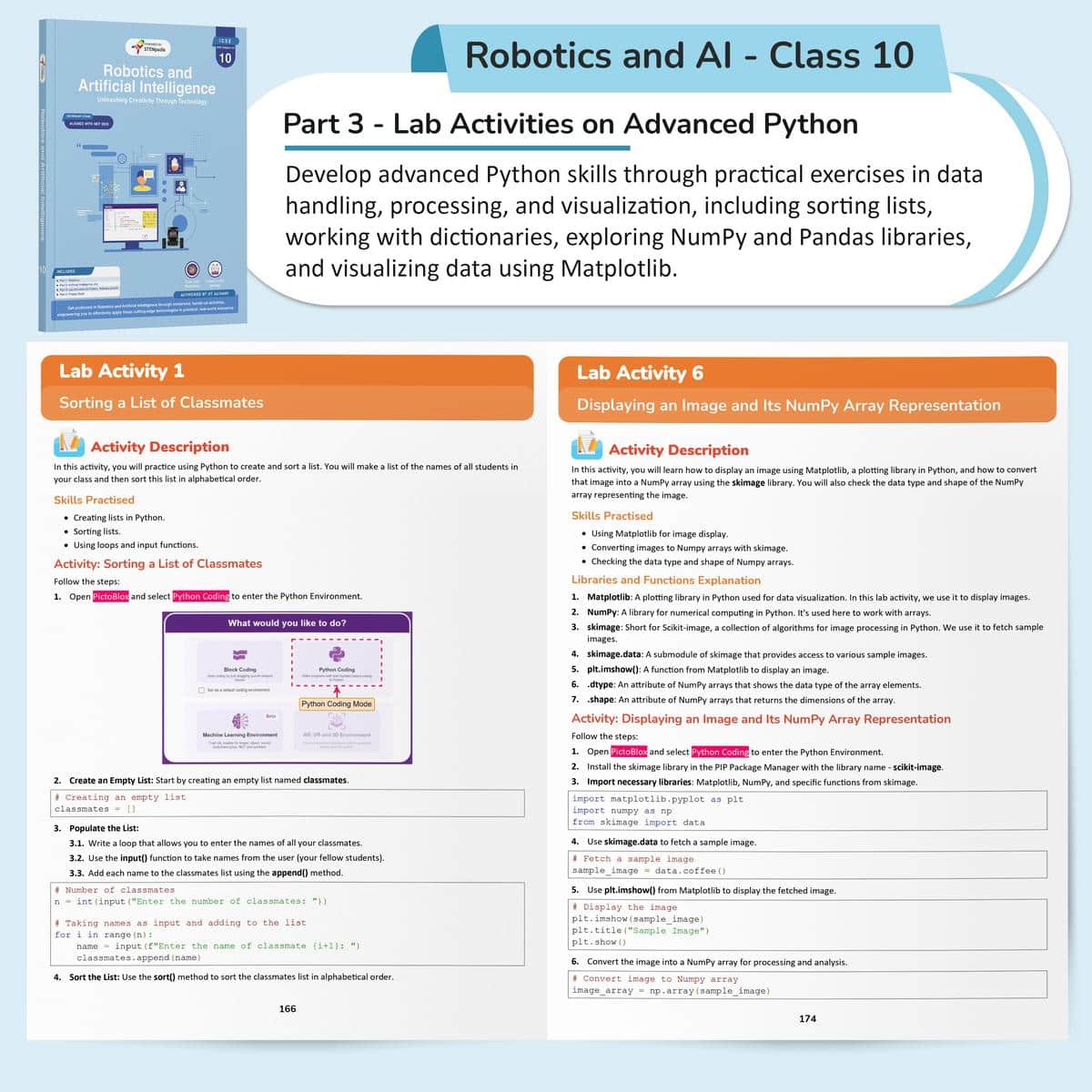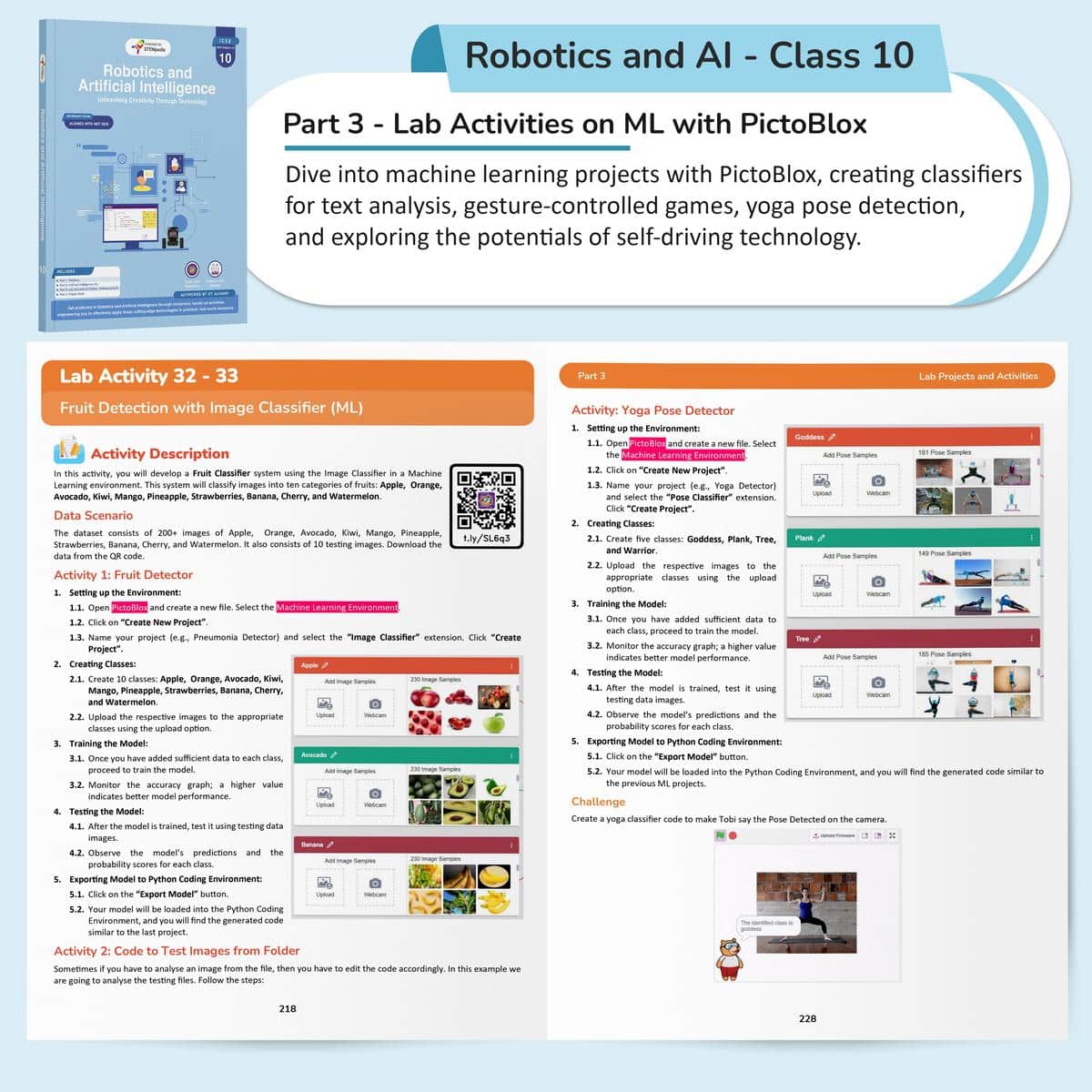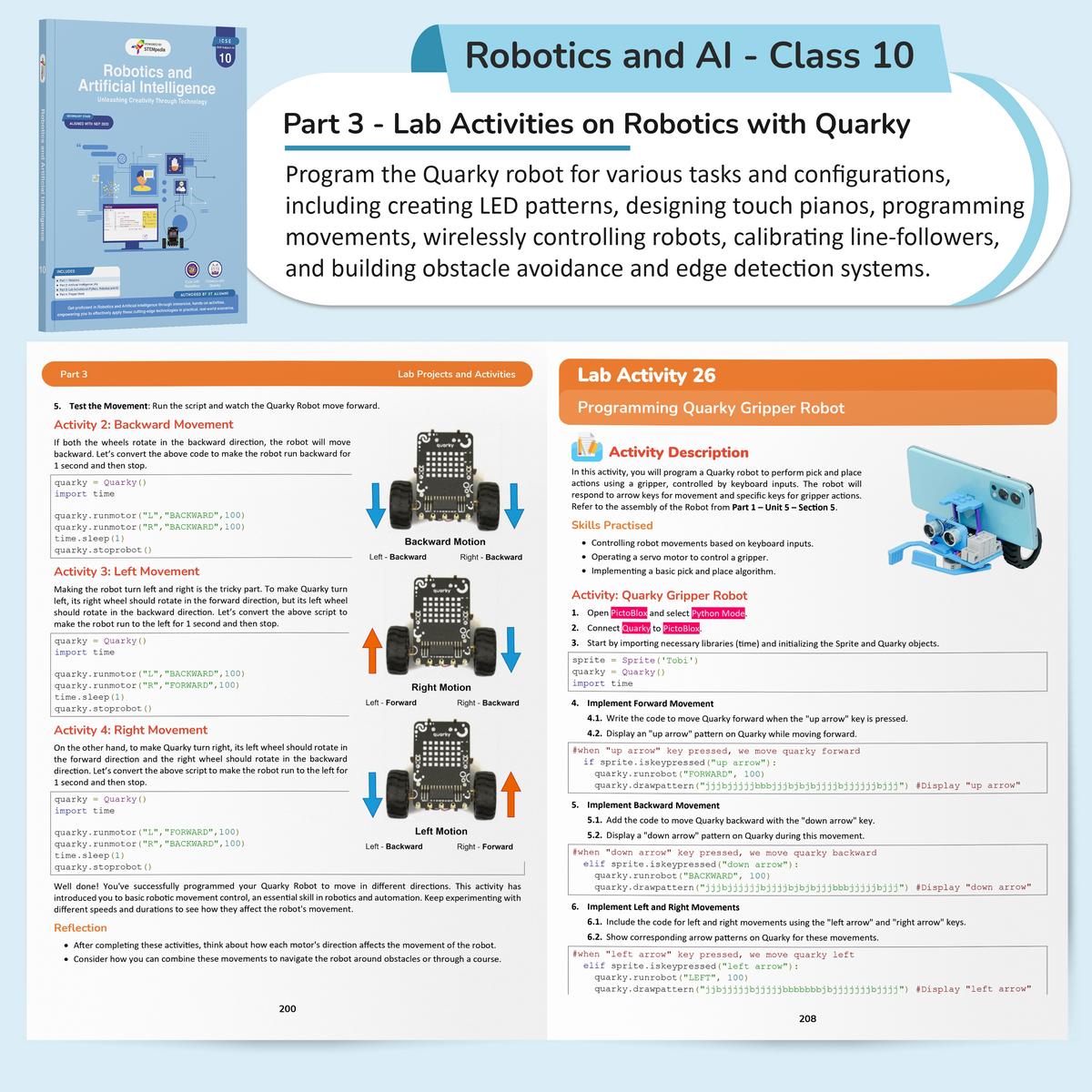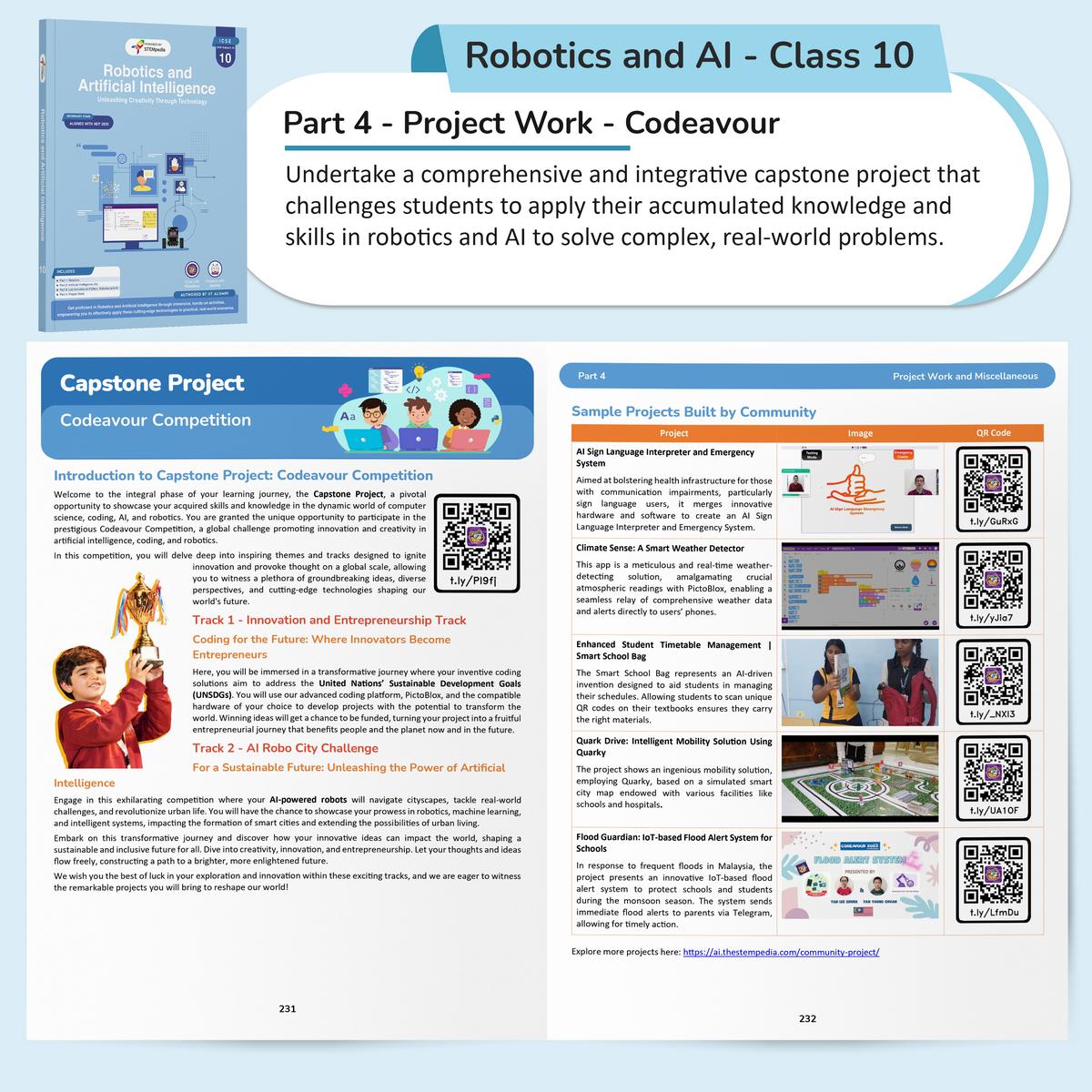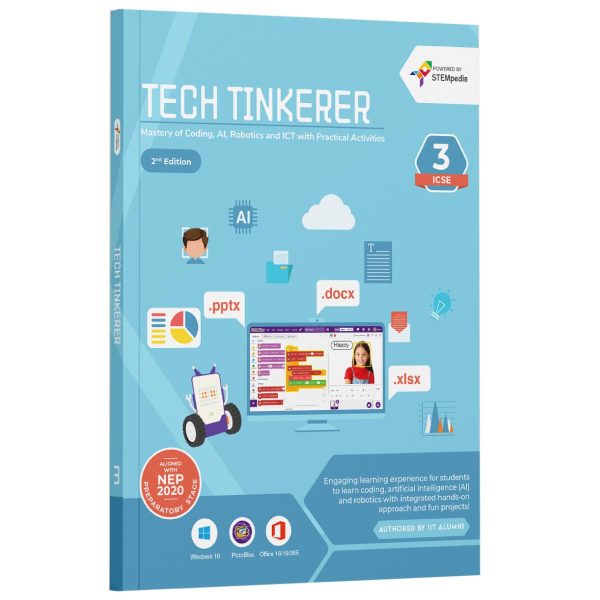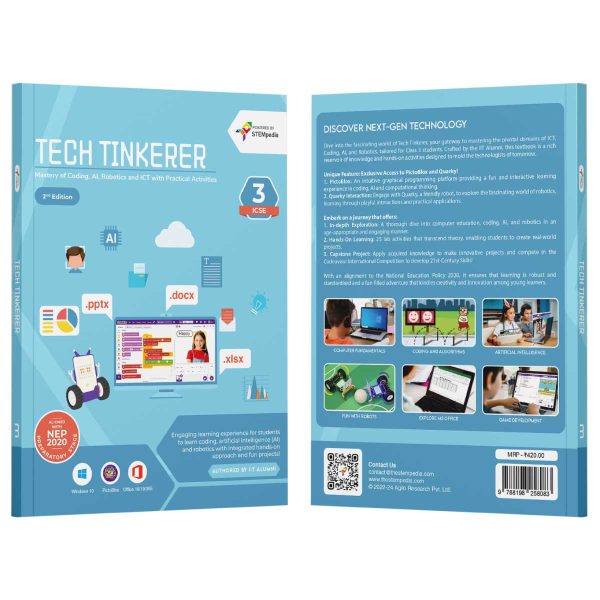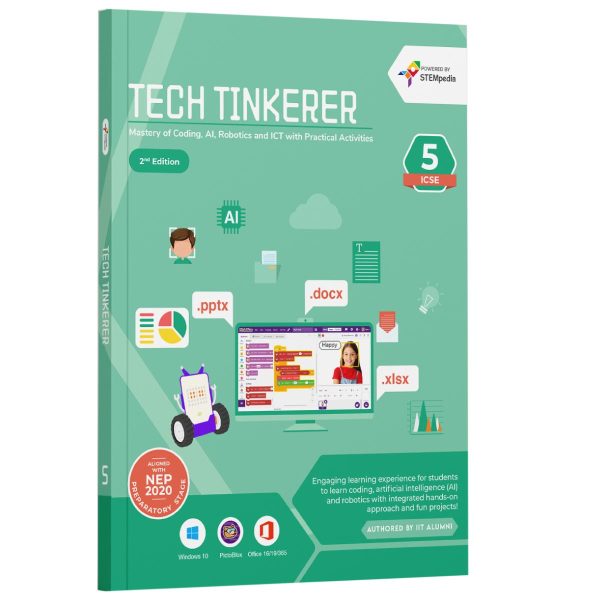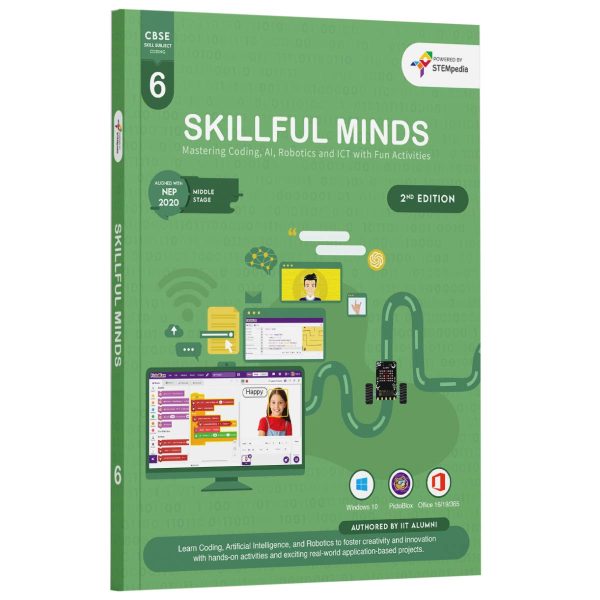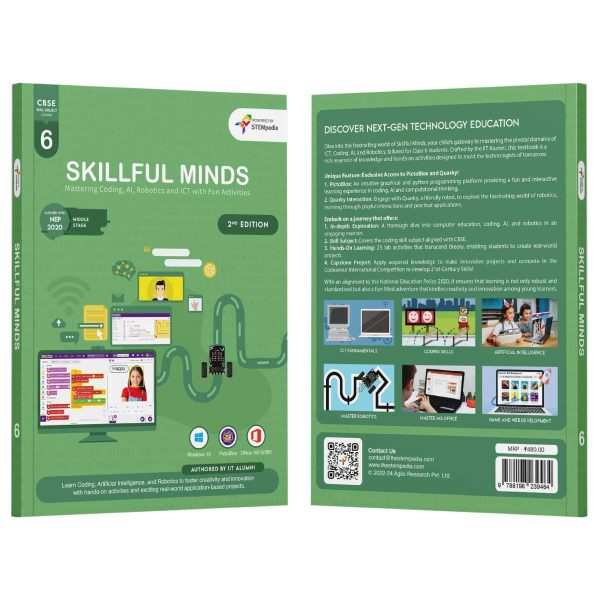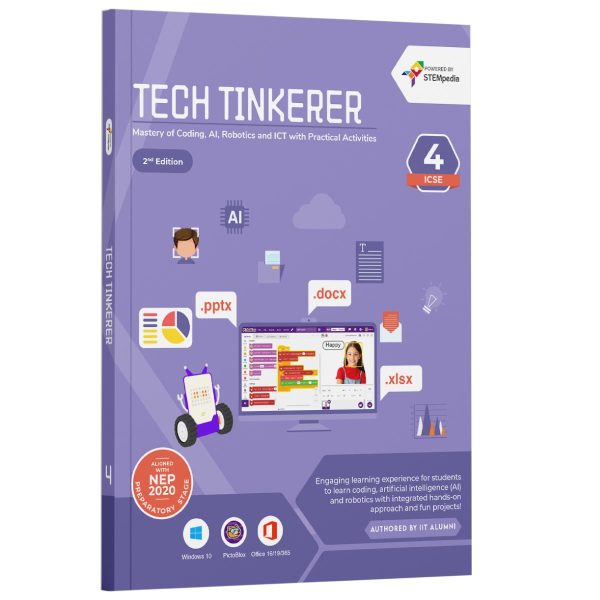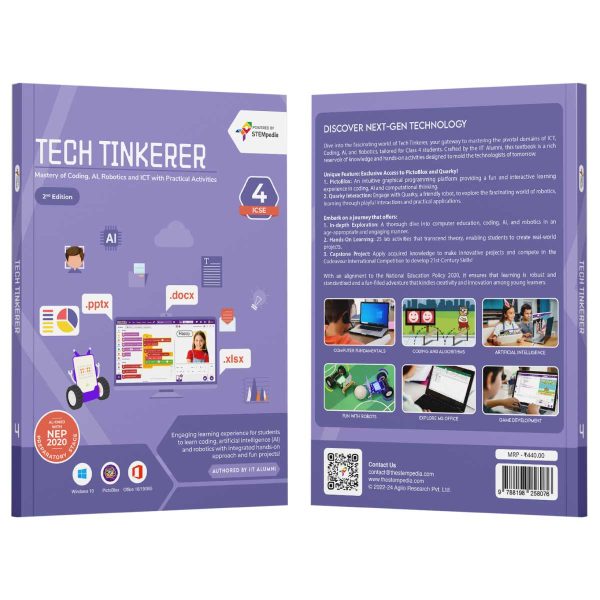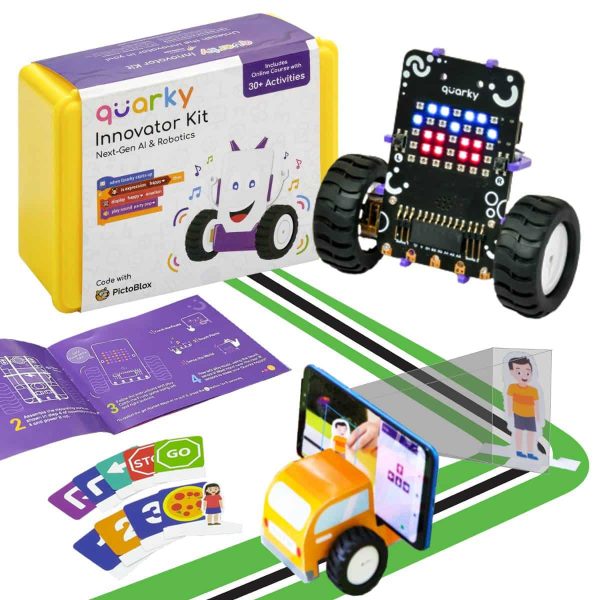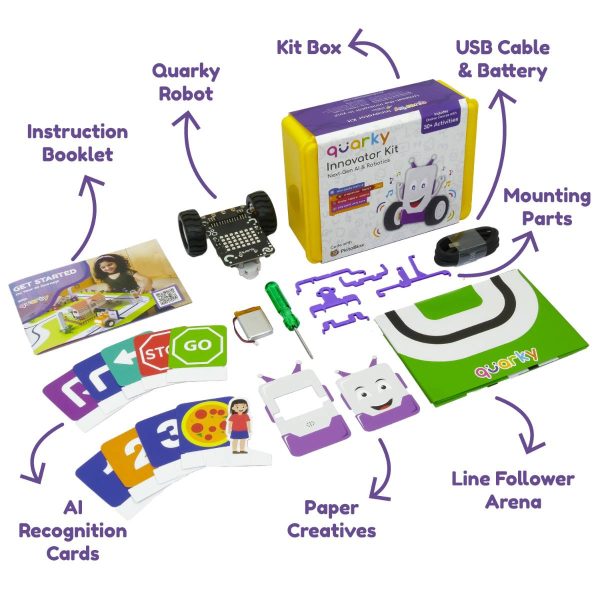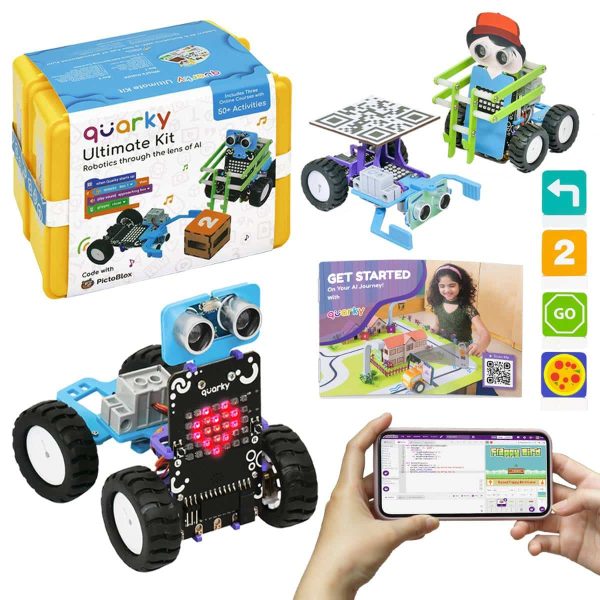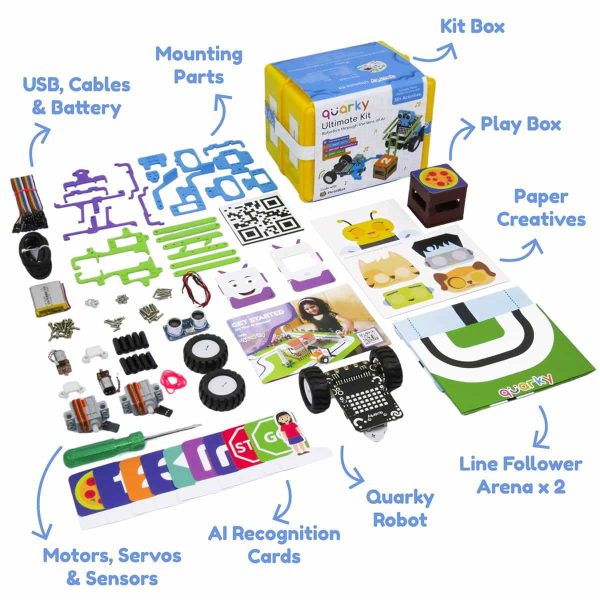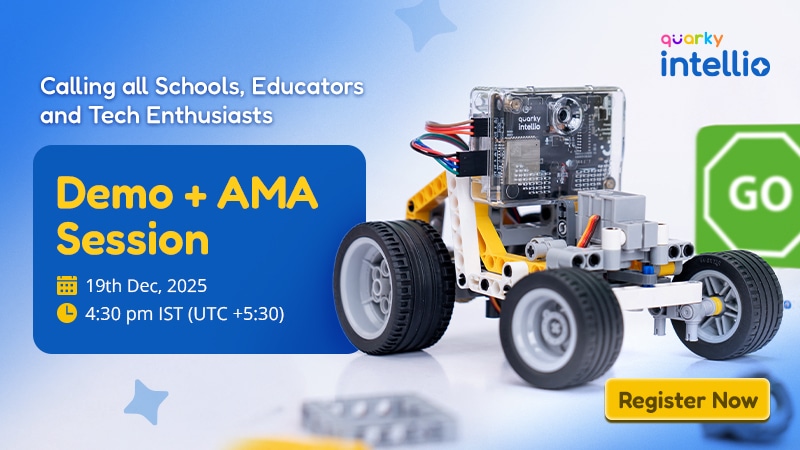Empowering Kids with the Right Future Skills
The ICSE Class 10 Robotics and AI curriculum provides students with foundational knowledge and practical skills in Robotics and AI, preparing them for a future in our technologically evolving world.
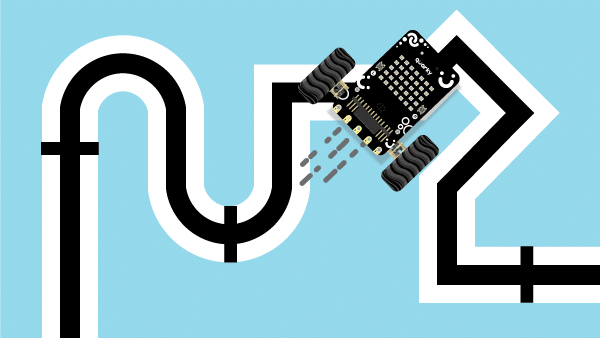
Hands-on Robotics
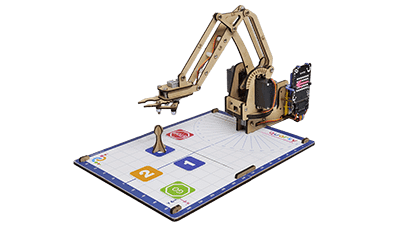
Industrial Robotics
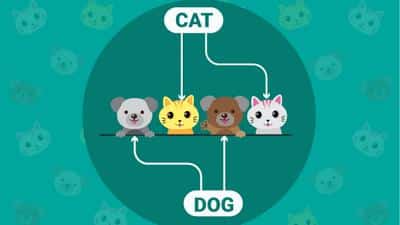
Machine Learning

Hands on Robotics

Industrial Robotics

Machine Learning

Artificial Intelligence

Python Programming
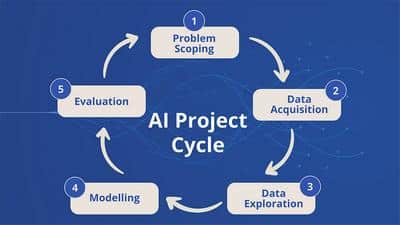
AI Project Cycle

Artificial Intelligence

Python Programming

AI Project Cycle
Inside the Book
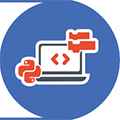
ICSE Curriculum Aligned
Tailored for Class 10, this book aligns with the ICSE curriculum in Robotics and AI (Code 66), ensuring comprehensive and relevant educational content.
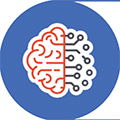
Thorough Coverage of Robotics and AI
It covers essential topics in Robotics, AI, Python programming, and machine learning, making it a complete resource for students.
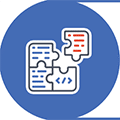
Activity-Based Learning
Incorporating 40 hands-on activities and theme-based learning that make learning both fun and intellectually stimulating.

Future-Ready Education Focus
Designed to prepare students for a technologically advanced future, it equips them with skills and knowledge essential for upcoming technological challenges.

PictoBlox AI Software
Learn the art of coding through Python coding in PictoBlox, a premier tool for young learners. Students also receive 5000 AI credits for PictoBlox.

Codeavour Competition
Exclusive access to Codeavour – the AI and Robotics Competition, with the opportunity to represent India on the global stage at Dubai.
Software and Hardware Used

Windows 10
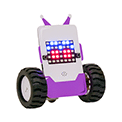
Quarky Robot

PictoBlox Python Coding

PictoBlox AI

PictoBlox Machine Learning
Part 1 - Robotics Skills
This section e xplores the evolution and impact of New Age Robotic Systems (NARS) across various industries, the transition from robots to cobots, components of robotic systems, and practical assembly and programming of different types of robots.
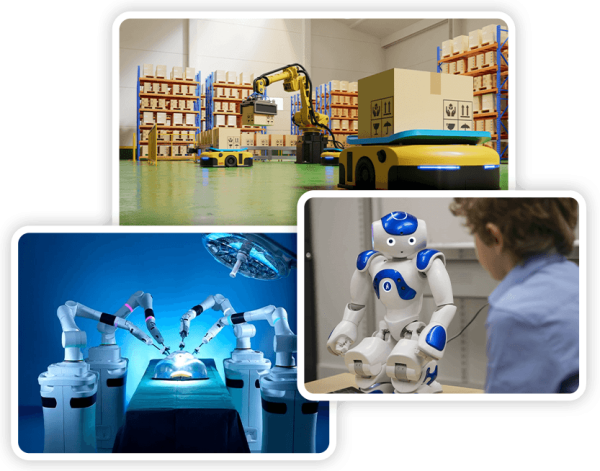
Unit 1: New Age Robotic Systems
- Section 1: Explores the evolution and modern impact of New Age Robotic Systems (NARS), differentiating them from traditional robotics.
- Section 2: Examines the role of robots in logistics and supply chain management, with future trends in warehouse automation.
- Section 3: Discusses assistant robots in daily life, including ethical aspects and human-robot interaction.
- Section 4: Focuses on the integration of robotics in smart environments such as homes, schools, and mobility solutions.
- Section 5: Covers the diverse industrial applications of autonomous drones.
- Section 6: Highlights the advancements and future prospects of robotics in medicine and healthcare.
- Section 7: Explores the use of robotics in agriculture, construction, and other industries, including modern elevator systems.
- Section 8: Discusses the growing relevance of NARS, their technological, economic, and social drivers, and future challenges.
Unit 2: From Robots to Cobots
- Section 1: Defines the distinction between machines and robots, exploring their evolution and characteristics.
- Section 2: Delves into collaborative robots (cobots), their evolution, distinguishing features, and impact on workforce and productivity.
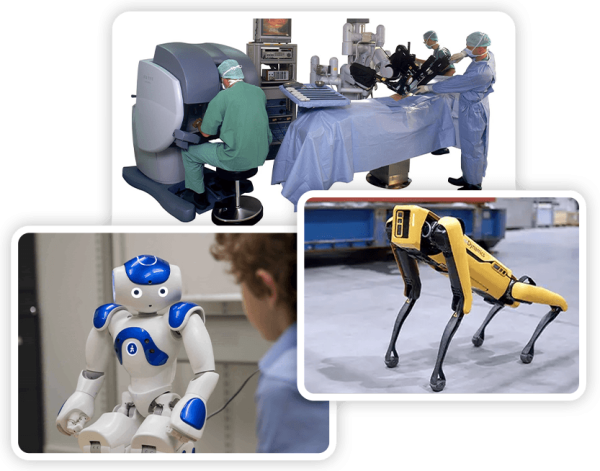
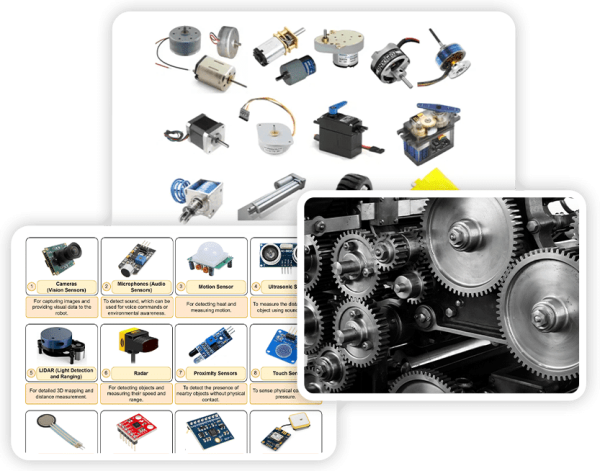
Unit 3: Components of Robots as a System
- Section 1: Introduces gears in robotics, their role in force transmission, and practical applications.
- Section 2: Examines common sensors in robotics, their classification, and functions.
- Section 3: Discusses the concept and types of actuators in robotics and their real-life applications.
- Section 4: Explores control systems in robotics, comparing manual and automatic systems.
- Section 5: Details the integration process of sensors, actuators, and controllers in robotic systems.
Unit 4: Visualization, Design and Creation of Components
- Section 1: Introduces the Quarky Ultimate Kit, its components, and programming features.
- Section 2: Describes each part of the Quarky Robot and its programming logic.
- Section 3: Highlights the features of TinkerCAD and provides tutorials for its use.
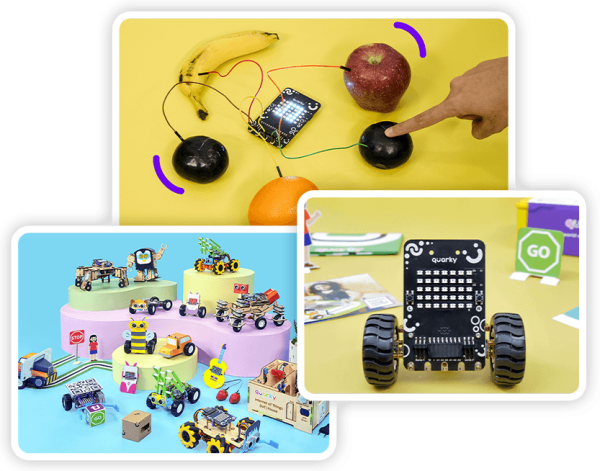
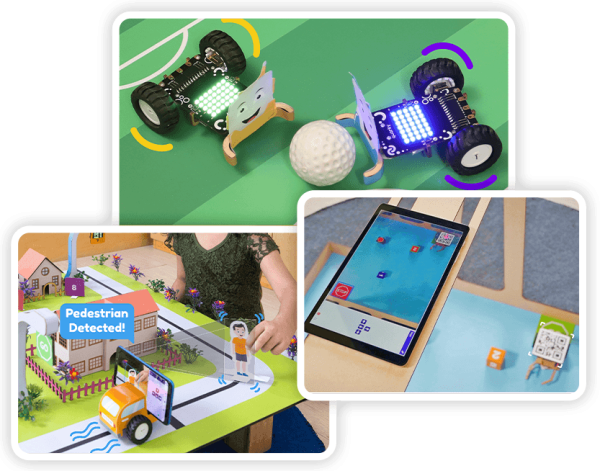
Unit 5: Integrating Robots as a System
- Section 1 – 2 Wheel Drive Robot: Guides students in assembling and controlling a 2-wheel drive robot, including wireless operations and circular motion logic.
- Section 2 – Line Follower Robot: Discusses the principles and programming logic behind line-following robots.
- Section 3 – Obstacle Avoidance Robot: Focuses on assembling a robot capable of avoiding obstacles using ultrasonic sensors and relevant programming logic.
- Section 4 – Edge Detection Robot: Teaches students to assemble and program a robot that can detect and react to edges to avoid falls.
- Section 5 – Quarky Gripper Robot: Provides step-by-step instructions for assembling a robotic gripper, exploring its functionalities.
- Section 6 – Pick and Place Robot: Covers the assembly and programming of a pick-and-place robot, demonstrating practical applications in automated systems.
Part 2: Artificial Intelligence Skills
This section covers decision-making in machines, machine vs human intelligence, cybersecurity, the AI project framework, and an introduction to data and programming with Python.
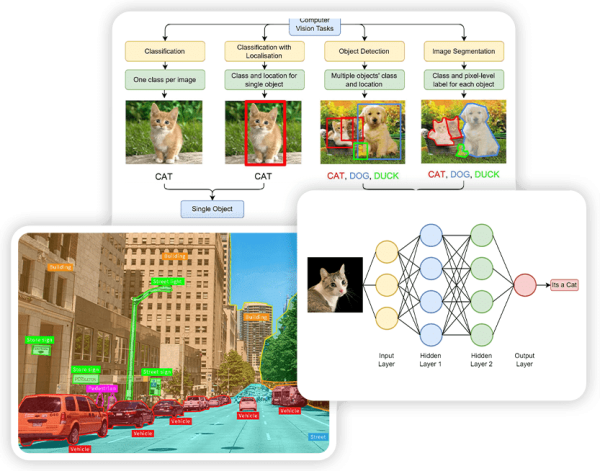
Unit 1: Decision Making in Machines / Computers
- Section 1 – Automated versus Autonomous Systems: Explores the roles of automated and autonomous systems in technology, including deterministic and probabilistic systems.
- Section 2 – Decision Making in Machines: Compares human and machine decision-making features, including object classification case studies.
- Section 3 – Introduction to Machine Learning (ML): Covers machine learning basics, data’s role, and practical applications like fruit sorting in PictoBlox.
Unit 2: Machine Intelligence and Cybersecurity in Computing
- Section 1 – Human and Machine Intelligence: Introduces machine intelligence, contrasting it with human intelligence.
- Section 2 – The Turing Test: Discusses the significance, criteria, and implications of the Turing Test in AI development.
- Section 3 – Connectivity Between Human and Machine Intelligence: Explores the collaborative potential, future prospects, and challenges in human-machine intelligence connectivity.
- Section 4 – Cybersecurity: Addresses ethical and security issues in computing, cyber threats, countermeasures, and cybersecurity best practices.
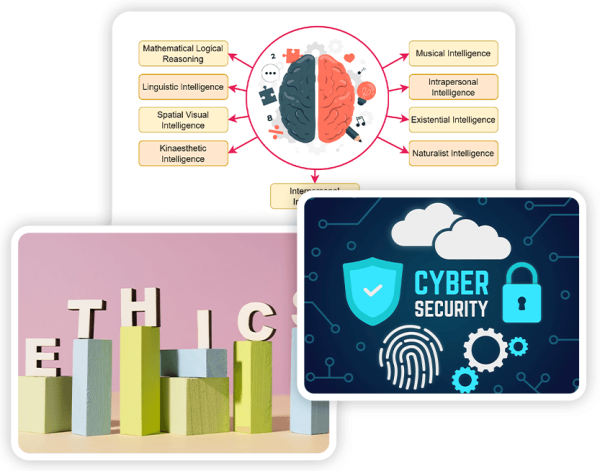
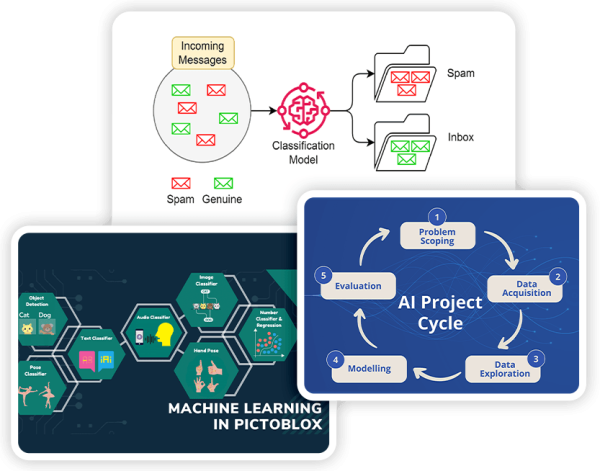
Unit 3: Components of AI Project Framework
- Section 1 – AI Project Cycle: Outlines the stages and processes in the AI project cycle.
- Section 2 – Problem Scoping: Focuses on sustainable development goals, problem canvassing and statement formulation.
- Section 3 – Data Acquisition: Discusses data sources, features, datasets, and acquisition strategies.
- Section 4 – Data Exploration: Delves into methods and techniques for exploring and analysing data.
- Section 5 – Modelling: Examines various modelling approaches including rule-based, supervised, and unsupervised learning.
- Section 6 – Evaluation: Explores evaluation techniques and metrics for AI models.
Unit 4: Introduction to Data and Programming with Python
- Section 1 – PictoBlox Python: Introduces PictoBlox Python Interface, offering an engaging platform for students to learn Python programming.
- Section 2 – Recap of Python Programming: Covers the basics of Python, including syntax, data types, operators, and looping, with practical examples.
- Section 3 – Python Packages: Teaches the installation and use of essential Python packages in PictoBlox, like NumPy, Matplotlib, Pandas, and SciPy.
- Section 4 – Lists in Python: Explores the creation and manipulation of lists in Python, covering various methods and operations.
- Section 5 – Tuples in Python: Discusses tuples in Python, including their creation, access methods, and conversion to and from lists.
- Section 6 – String in Python: Delves into string manipulation in Python, including string traversal, concatenation, and slicing techniques.
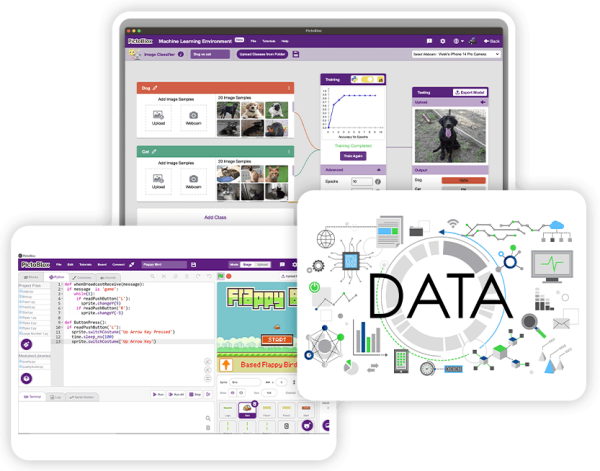
Part 3: Lab Activities on Python, Robotics, and Artificial Intelligence
This section of the book offers a series of lab activities encompassing advanced Python programming, robotics with Quarky, AI with PictoBlox, and machine learning applications.
| Lab Activity | Name | Category | Activity Description |
|---|---|---|---|
| 1 | Sorting a List of Classmates | Advance Python | Create and sort a classmate name list in Python. |
| 2 | Finding a Specific Word in a Sentence | Advance Python | Develop a Python program to find a specific word in a sentence. |
| 3 | Dictionary of Indian Cities | Advance Python | Create a Python dictionary with data about various Indian cities. |
| 4 & 5 | Exploring NumPy Arrays – Part 1 | Advance Python | Gain practical understanding of creating and manipulating NumPy arrays. |
| 6 | Displaying an Image and Its NumPy Array Representation | Advance Python | Display an image and convert it into a NumPy array using Python libraries. |
| 7 | Pandas Basics and Reading a CSV File | Advance Python | Learn to read and manipulate data from a CSV file using Pandas. |
| 8 | Reading JSON Data into a Pandas DataFrame | Advance Python | Understand how to read and analyze JSON data using Pandas. |
| 9 | Basic Pandas Operations | Advance Python | Practice basic data operations using Pandas in Python. |
| 10 | Plotting X and Y Point Arrays using Matplotlib | Advance Python | Plot X and Y point arrays using the Matplotlib library. |
| 11 | Plotting with Matplotlib - Markers, Line Styles, & Axis Labels | Advance Python | Explore various plotting techniques using Matplotlib. |
| 12 | Plotting Bar Graphs with Bestselling Book Data | Advance Python | Use Matplotlib to plot and analyze bestselling book data. |
| 13 | Plotting Histograms with Top YouTubers' Data | Advance Python | Create histograms to analyze data of top YouTubers. |
| 14 | Regression - Predicting Future Temperatures | Advance Python | Perform linear regression to predict future temperatures. |
| 15 | Creating and Analysing a Normal Distribution | Advance Python | Generate and analyze a set of scores following a normal distribution. |
| 16 | Calculating Electricity Bill | Advance Python | Write a program to calculate electricity bills based on meter readings. |
| 17 | Calculating Employee Bonus | Advance Python | Develop a Python program to calculate employee bonuses. |
| 18 | LED Patterns with Quarky | Robotics with Quarky | Control Quarky's RGB LED grid to create gradient patterns. |
| 19 | Creating a Touch Piano with Quarky | Robotics with Quarky | Transform Quarky into a touch-sensitive piano using Python. |
| 20 | Programming the Quarky Robot's Movements | Robotics with Quarky | Program Quarky to move in different directions. |
| 21 | Wirelessly Controlled Robot | Robotics with Quarky | Learn to control Quarky's movements using keyboard keys. |
| 22 & 23 | Calibrating and Programming a Line-Following Robot | Robotics with Quarky | Program and calibrate a line follower robot with Quarky. |
| 24 | Programming Quarky Obstacle Avoidance Robot | Robotics with Quarky | Program an obstacle avoidance robot using Quarky and Python. |
| 25 | Programming Quarky for Edge Avoidance | Robotics with Quarky | Program a robot for edge avoidance using ultrasonic sensors. |
| 26 | Programming Quarky Gripper Robot | Robotics with Quarky | Program a Quarky robot to perform pick and place actions. |
| 27 | Programming Pick and Place Robot | Robotics with Quarky | Program a Quarky Pick and Place robot for specific actions. |
| 28 | Face Detection with Python | AI with PictoBlox | Learn face detection basics using Python in PictoBlox. |
| 29 | Finger Tracking with Python | AI with PictoBlox | Understand hand detection for tracking fingers using Python. |
| 30 & 31 | Mask Detection with Image Classifier (ML) | ML with PictoBlox | Create a mask detection system with PictoBlox's ML environment. |
| 32 & 33 | Fruit Detection with Image Classifier (ML) | ML with PictoBlox | Develop a fruit classifier system using PictoBlox's ML tools. |
| 34 | NLP Based Text Classifier | ML with PictoBlox | Implement a text classifier for basic NLP applications in PictoBlox. |
| 35, 36 & 37 | Gesture-Controlled Beetle in the Maze Game | ML with PictoBlox | Create a gesture-controlled game using a trained ML model. |
| 38 & 39 | Yoga Pose Detector with Pose Classifier | ML with PictoBlox | Develop a Yoga Pose Detection system using PictoBlox's ML tools. |
| 40 | Self-Driving Car with Quarky | AI and Robotics | Program a simulated self-driving car that responds to traffic signs. |
Part D - Project Work / Field Visit / Student Portfolio
This section focuses on project-based learning, encouraging students to apply their knowledge in real-world scenarios. It includes a Capstone Project – Codeavour, a showcase of sample projects from the community, and answer keys for self-evaluation.
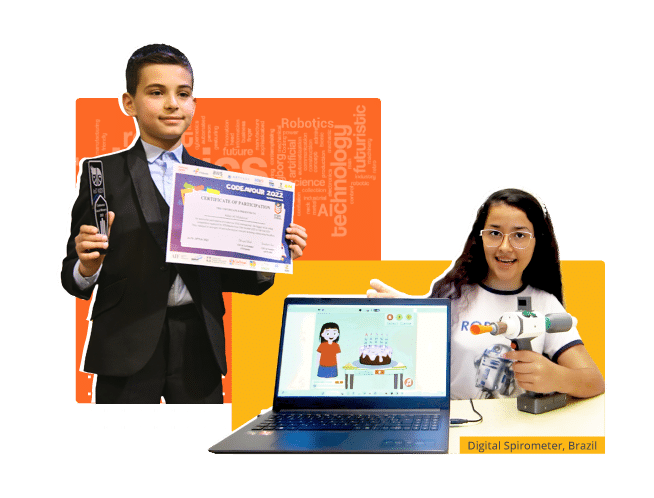
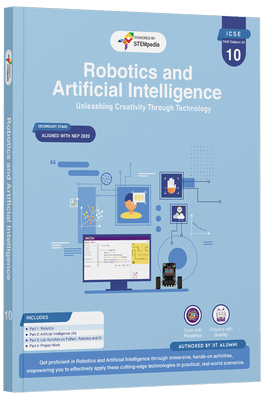
Get Your Book Today!
Artificial Intelligence is the book your child needs to start their journey in technology. Equip them with the skills of tomorrow, today!
FAQs on Robotics and AI - Class 10 Book (Subject Code 66)
This book aims to comprehensively introduce Class 10 students to the fundamentals and advanced concepts of Robotics and AI. It is designed to foster a deep understanding of these fields, equipping students with practical skills through hands-on activities and projects. The curriculum is developed to help students navigate and contribute to the evolving landscape of technology, thereby preparing them for future technological challenges and career opportunities.
This book, specifically designed for Class 10 students, is fully aligned with the ICSE Subject Code 66, focusing on Robotics and Artificial Intelligence (AI). Its unique approach and features are as follows:
- Curriculum Alignment: It meticulously covers all essential topics outlined in the ICSE Robotics and AI curriculum, ensuring a comprehensive grasp of both theoretical and practical aspects.
- Interactive Learning Tools: The book incorporates PictoBlox and Quarky for practical learning. PictoBlox simplifies AI concepts through interactive activities, while Quarky offers hands-on robotics experience.
- Comprehensive Coverage: Divided into four parts, it covers Robotics, AI, lab activities, and project work. Each section is detailed, providing depth and breadth in learning.
- Activity-Based Learning: Emphasizes practical activities and lab exercises, fostering an engaging and interactive learning environment.
- Expert Authorship: Written by experts in technology and AI, the book offers authoritative and practical knowledge.
- Modern Technological Content: Tailored to match the technological interests of today’s students, it includes updated content on current trends and advancements.
- Ethical AI Understanding: Discusses the ethical aspects and responsibilities associated with AI technology, preparing students for responsible future technology use.
- Resource for Teachers and Students: Includes an answer key for exercises, numerous lab activities, and assignments, aiding in tracking learning progress and self-assessment.
- Future-Ready Skills: The book prepares students for future technological landscapes by fostering AI-readiness, developing problem-solving skills, and enhancing critical thinking through practical applications.
This book stands out for its comprehensive, interactive, and practical approach to teaching Robotics and AI, aligning with the ICSE curriculum and catering to the educational needs of Class 10 students.
The book is authored by Pankaj Kumar Verma, Chief Technology Officer at STEMpedia, an alumnus of IIT Kanpur, and Khushbu Chauhan, an AI & Robotics Expert at STEMpedia, with a BE degree from Gujarat Technological University. Their expertise ensures the content is both educational and technically accurate.
The book stands out for its comprehensive coverage of Robotics and AI, combined with engaging practical activities. It includes modern technological content tailored to match the interests of today’s students. The book emphasises activity-based learning to foster interactive understanding of concepts. Detailed step-by-step guidance ensures students can easily grasp complex topics. Additionally, the book contains challenging exercises including multiple-choice questions, short answers, and higher-order thinking questions to test and enhance understanding.
The book is divided into four main parts:
- Part 1 focuses on Robotics, exploring the evolution, applications, and practical aspects of robotic systems.
- Part 2 delves into Artificial Intelligence, covering decision-making in machines, machine vs. human intelligence, cybersecurity, and Python programming.
- Part 3 comprises Lab Activities on Python, Robotics, and AI, offering hands-on experience.
- Part 4 includes Project Work and Miscellaneous resources, such as a capstone project and sample community projects.
The curriculum aims to develop a foundational understanding of Robotics and AI among students. It focuses on building expertise through a blend of theory and practical work, enhancing appreciation and understanding of these subjects. The course prepares students for future technological advancements by introducing key AI concepts and computational skills, including Python programming. It also raises awareness about the ethical implications of AI technologies.
Absolutely. The book aligns with the ICSE Robotics and AI curriculum (Subject Code 66) for Class 10. It covers all the essential topics and skills required for the exams, making it a valuable resource for students preparing for their final assessments.
- PictoBlox: PictoBlox is an intuitive and engaging Python platform that simplifies complex AI concepts for students. It uses interactive activities such as image classification, object detection, and natural language processing to make learning AI accessible and enjoyable.
- Quarky: Quarky is a robotic tool that offers students a hands-on experience in robotics. It allows students to explore robotic movements, sensor usage, and control systems in a practical setting, thus deepening their understanding of robotics.
The book offers extensive coverage of Python programming, starting from the basics and advancing to more complex concepts and libraries relevant to AI and robotics. It includes practical examples and exercises to ensure students understand the application of Python in the field of AI and robotics.
The book supports practical learning in robotics through detailed lab activities and project work. Students get to assemble and program various types of robots, applying their theoretical knowledge in a hands-on environment. These activities are designed to enhance their understanding of robotic systems and their components, along with programming skills.
Yes, the book includes a comprehensive answer key for exercises and detailed guidance for project work. This support ensures students can effectively learn from their mistakes and gain a deeper understanding of the subject matter.
While the book is designed with classroom instruction in mind, its clear structure and comprehensive content also make it suitable for self-study. Students who are motivated and disciplined can use this book to learn independently.

